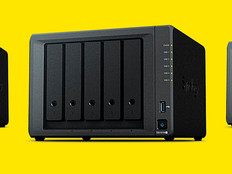The Drive Toward Solid-State Storage
Scott Futrell, CIO of Gwinnett County Public Schools in Georgia, didn't go looking for solid-state drives (SSDs) for his notebook computers, but he's sure glad he found them. Solid-state's light weight and low heat generation sold him on the technology. And he says he's enjoying putting them to good use throughout the 130-school district, which spans 437 square miles northeast of Atlanta.
"I've got executives traveling between schools every day, and because there are no moving parts with solid-state, there's not as much concern about bumping them or suffering a disk failure," he says.
Gwinnett County has standardized on Lenovo products, and in the past 18 months alone, it has purchased approximately 100 SSD-equipped notebooks, including the Lenovo ThinkPad X201. Futrell says that because the solid-state drives are more expensive and lack the capacity of traditional hard disk drives – the district's X201s have 128 gigabytes of storage – he has to use them strategically.
Fresh Thinking
Unlike HDDs, which are electromechanical, SSDs (including the popular flash storage) lack spinning disks and don't require power to retain memory. They also tend to boot faster, emit less heat and run quieter. And yet schools have hesitated to embrace the technology – not only in notebooks, but also in enterprise storage arrays.
According to Greg Schulz, founder of the Server and StorageIO Group, this reluctance boils down to one simple reason: cost for capacity. (It's essentially the difference between spending X dollars per gigabyte for SSD storage and X cents per gigabyte for traditional HDD storage.)
"Yes, SSD is more expensive," Schulz says, "but it also allows users to get to applications and data more quickly. That's the trade-off."
Some SSD drives have a maximum sequential read speed of 250 megabytes per second and a maximum sequentialwrite speed of 180MBps.
SOURCE: Toshiba
As prices come down and SSD starts to become more affordable for schools, Schulz says K–12 IT managers "should start thinking about putting it into notebooks and netbooks to boot quicker, reduce power consumption and make batteries last longer. These are things that [schools] care about."
Schulz also suggests that schools look past the cost-for-capacity argument and consider deploying SSD-based devices where they'll be most effective. For instance, he wouldn't recommend giving them out as part of a mass one-to-one computing program. Instead, supply them to a few administrators who deal with emergency call-tree notifications or other applications that are time-sensitive.
"This isn't the type of technology that you measure per gigabyte," he says. "Instead, it has to be factored on a dollar-per-transaction" basis.
Rock Solid
Henry Thiele, chief technology officer for Maine Township High School District 207 in Illinois, says a low price tag wasn't his primary requirement when he first bought solid-state netbooks a few years ago. "We mostly needed a fast start-up and longer battery life" so students could make the most of their time with the netbooks, he explains.
Today, he has 250 solid-state PCs, including some Asus Eee netbooks, spot-deployed throughout the district's three schools in Park Ridge and Des Plaines. The library at each school even allows students to check out the netbooks as loaners during class periods.
@EdTech
For more on solid-state drives' suitability in the cloud, visit edtechmag.com/k12/SSD410.
Because the district doesn't store data on the devices, SSDs' smaller capacity wasn't a great concern. "Most of our applications are in the cloud, and the students carry thumb drives," Thiele says. "Our biggest image [in the district] is 80GB, and the SSD netbooks handle the [scaled-down version of the] image designed for those devices just fine."
Like many of his peers, Thiele is looking forward to SSD prices coming down so he can expand his district's use of the technology. "If we could get solid-state at a comparable price to hard disk, I'd certainly go solid-state. It's my preferred option," he says.








